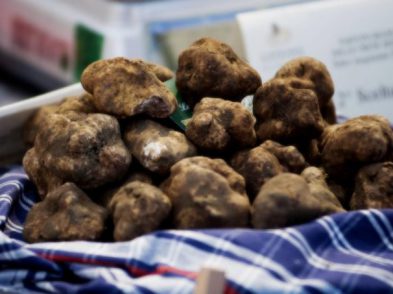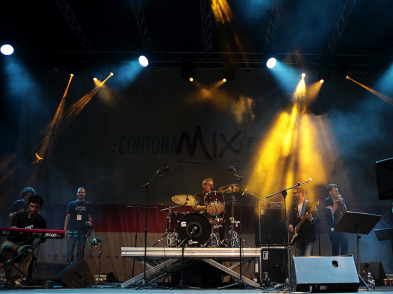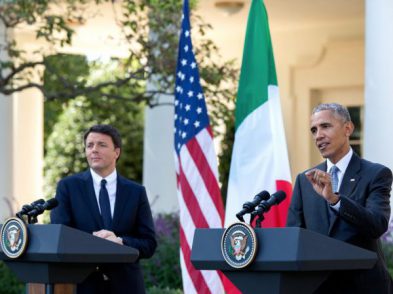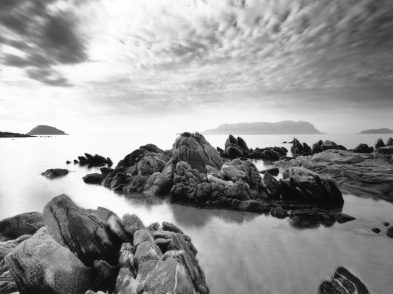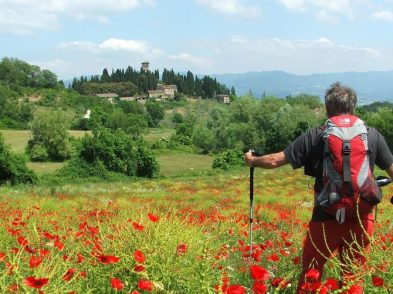The annual Cortona on the Move international photography festival, which opened July 13 and continues through October 1, features hundreds of images of the people and issues that define cultures around the globe, aimed at generating both reflection and debate.
“Today, photography has become more important than ever for helping explain the world to us,” said Sarah Leen, director of photography at National Geographic. “It’s a medium that is being used by everybody to tell stories, to talk to one another, to stay in touch. I think that professional photography is going to become more and more important.”
The three-day opening weekend included panel discussions, book signings and guided tours. During one of those discussions, Leen recounted the evolution of photography from the days of black-and-white to color to the current digital formats. Throughout that history, she said, the best photography can be found at “the intersection of art and journalism.”
Many of the photographs on display at the festival, which began in 2011, fit that description. The subjects range from Afghan soldiers to American women to Iranian youth. The issues deal with poverty and migration and the environment, in locations from Ukraine to Colombia to Ethiopia.
Photographer Simone Donati of the Florentine photography collective TerraProject turned his lens on the people of Cortona, looking at the work of local sporting associations and social clubs that serve clients such as those who are elderly, disadvantaged or disabled. The project, titled “Non solo gol,” was commissioned by the Comune of Cortona as part of its “Lo sport un compagno di vita” campaign. The photos are displayed outdoors at Parco Parterre, visible to bikers, runners or children using the nearby playground.
“I believe sport is a great tool for uniting people and building friendship and trust,” Donati said, explaining that he encountered real people enjoying what they were doing in activities that created a social network. “It was interesting to enter into all these realities, a 360-degree view of an active and vibrant community like that of Cortona.”
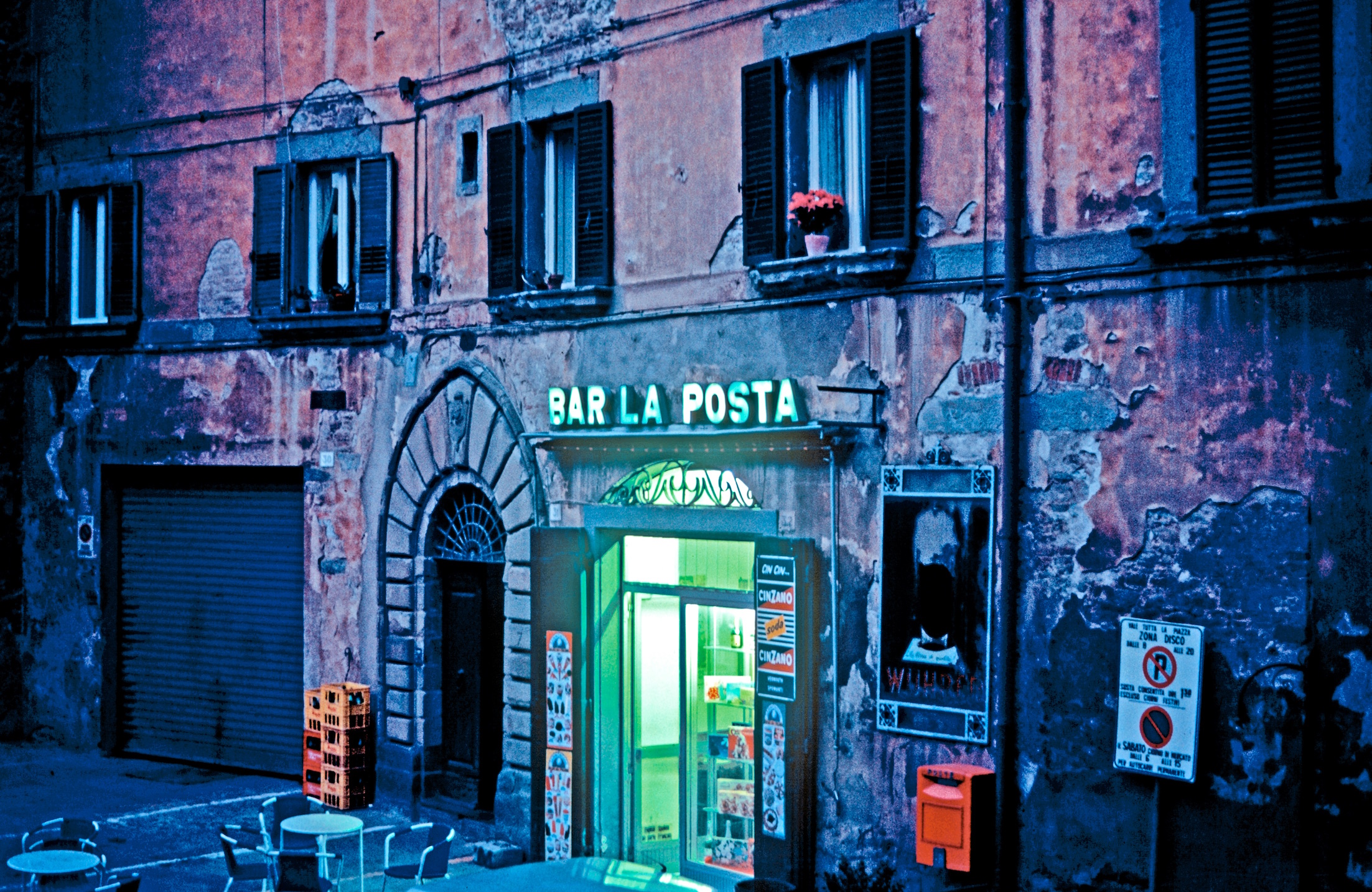
Spring 1985 | © Michael Ewert
In another exhibit, German photographer Michael Ewert recorded the transformation of Cortona beginning in 1979, photographing the city’s evolution from a traditional agricultural market town into its current manifestation as a tourist destination. Ewert, who lives part of the time in Tecognano, on the hillside of Cortona, focused on shop windows, which he used as a metaphor to highlight the growing influence of capitalism and the consumer society.
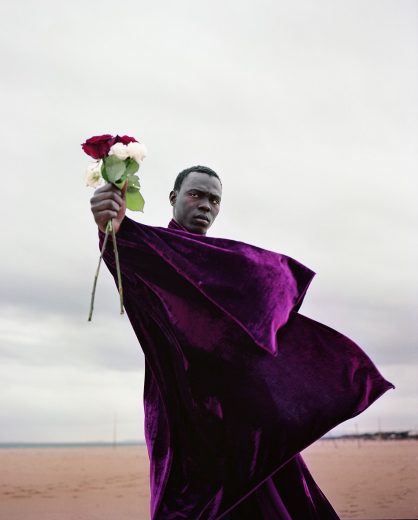
Aly Gadiaga “Gucci”. Catania, Sicily Italy, November
2015 | © Daniel Gastro Garcia
For his photographs, British photographer Daniel Castro Garcia travelled around Europe documenting the immigration crisis, with particular focus on the migrants arriving on the shores of Sicily. He titled the exhibit Foreigner after reaching the conclusion that wherever you go, everyone is a foreigner.
At the Fortezza del Girifalco overlooking the city, giant photographs hang from the stone walls, like medieval banners from a previous era. The colorful canvas images depict the rebirth of the Tenuta Granducale di Montecchio estate, in the form of pictures of the botanical garden taken by German photographer Jessica Backhaus. The long-term project calls for restoring the Umbrian estate into a historical and cultural research center, aimed at protecting the region’s biodiversity. The photos displayed in the fortress will become part of a series of five books documenting the process, a project of Cortona on the Move working with Aboca, a company that produces natural herbal health remedies.
The photographs are displayed at nine different venues throughout Cortona, a collaboration between the city and the festival that has breathed new life into ancient, and sometimes unused, locations throughout the ancient hill town. Sites where photos can been seen include:
- The Vecchio Ospedale, where images of the beaches where the D-Day invasion took place during World War II hang in the corridors of the abandoned hospital once occupied by patient beds and operating rooms.
- The Ex Magazzino delle Carni, where portraits of people affected by war in Afghanistan hang on the austere walls where a butcher’s shop once stored meat and groceries.
- The Museo MAEC, where portraits of Barack Obama, the first African-American elected president of the United States, hang alongside the relics of the ancient Etruscan culture.
- The Palazzo Cinaglia, where images of the offspring of Japanese soldiers and Indonesian women, whose births resulted from World War II, stare from the walls of the 13th century monastery, which later served as an orphanage.
Organizers of Cortona on the Move also announced plans to create a new Italian photography network, which also will include Fotografia Europea of Reggio Emilia, PhotoLux of Lucca and Festival della Fotografia Etica of Lodi.

